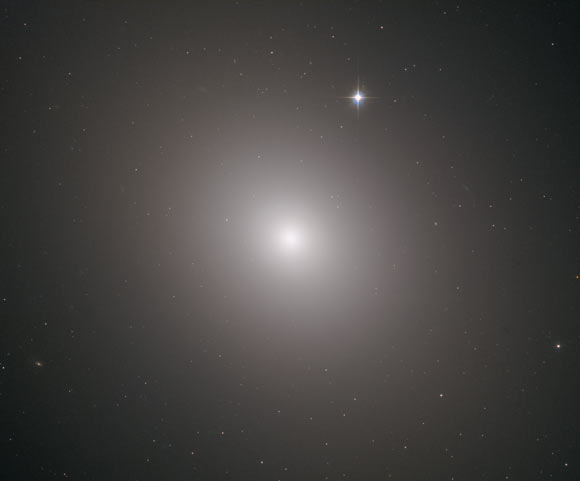The NASA/ESA Hubble Space Telescope has produced this beautiful image of an elliptical galaxy called Messier 49.

This Hubble image shows the elliptical galaxy Messier 49. The image was made from separate exposures taken in the visible and infrared regions of the spectrum with Hubble’s Advanced Camera for Surveys (ACS) and Wide Field Camera 3 (WFC3). Four filters were used to sample various wavelengths. The color results from assigning different hues to each monochromatic image associated with an individual filter. Image credit: NASA / ESA / Hubble / J. Blakenslee / P Cote et al.
Unlike spiral galaxies, which have a well-defined structure and boast picturesque spiral arms, elliptical galaxies appear fairly smooth and featureless.
They tend to contain a larger portion of older stars than spiral galaxies and also lack young blue stars.
Messier 49 itself is very yellow, which indicates that the stars within it are mostly older and redder than the Sun.
In fact, the last major episode of star formation was about 6 billion years ago — before our Sun was even born.
Messier 49 is also rich in globular clusters, ancient groups of thousands or even millions of stars, gravitationally bound into a single structure about 100-200 light-years across.
It hosts about 6,000 globular clusters, a number that dwarfs the 150 found in and around our Milky Way Galaxy.
The galaxy also hosts a supermassive black hole at its center with a mass of more than 500 million solar masses, identifiable by the X-rays pouring out from the heart of the galaxy.
Also known as M49, LEDA 41220 and NGC 4472, Messier 49 was discovered by French astronomer Charles Messier on February 16, 1771.
The galaxy is approximately 56 million light-years away and measures about 157,000 light-years across.
It was the first member of the Virgo Cluster of galaxies to be discovered, and it is more luminous than any other galaxy at its distance or nearer.







